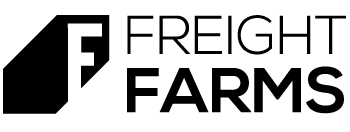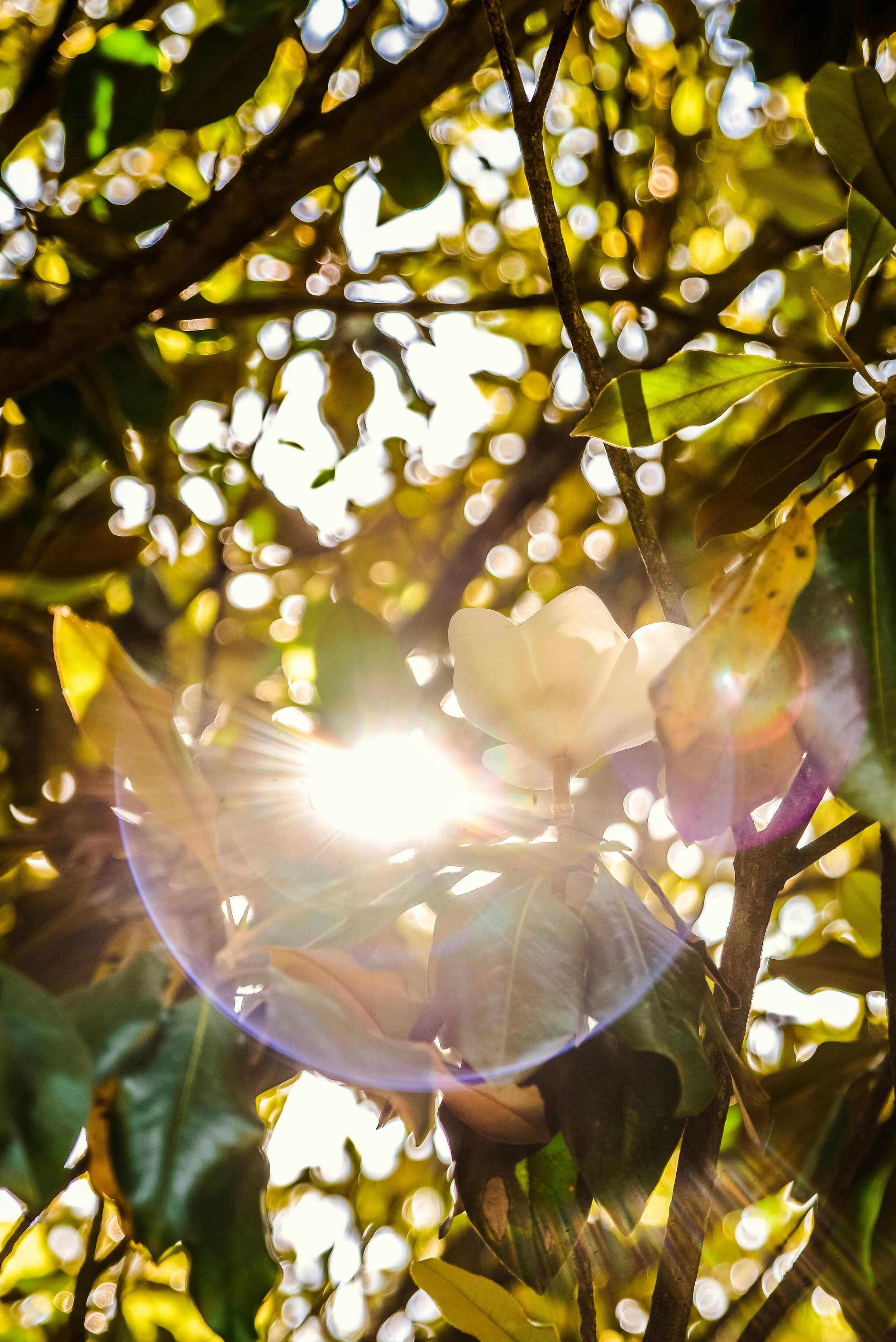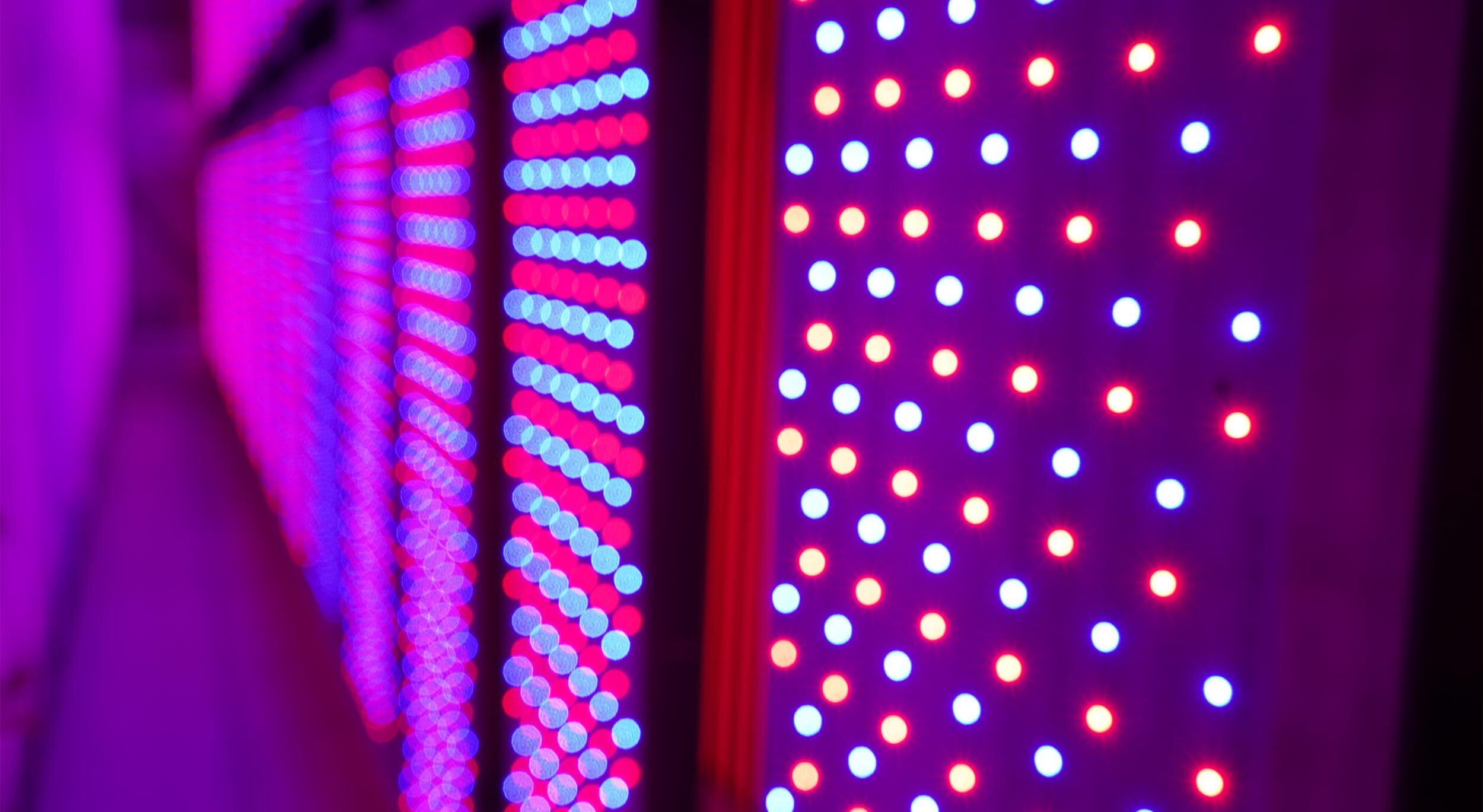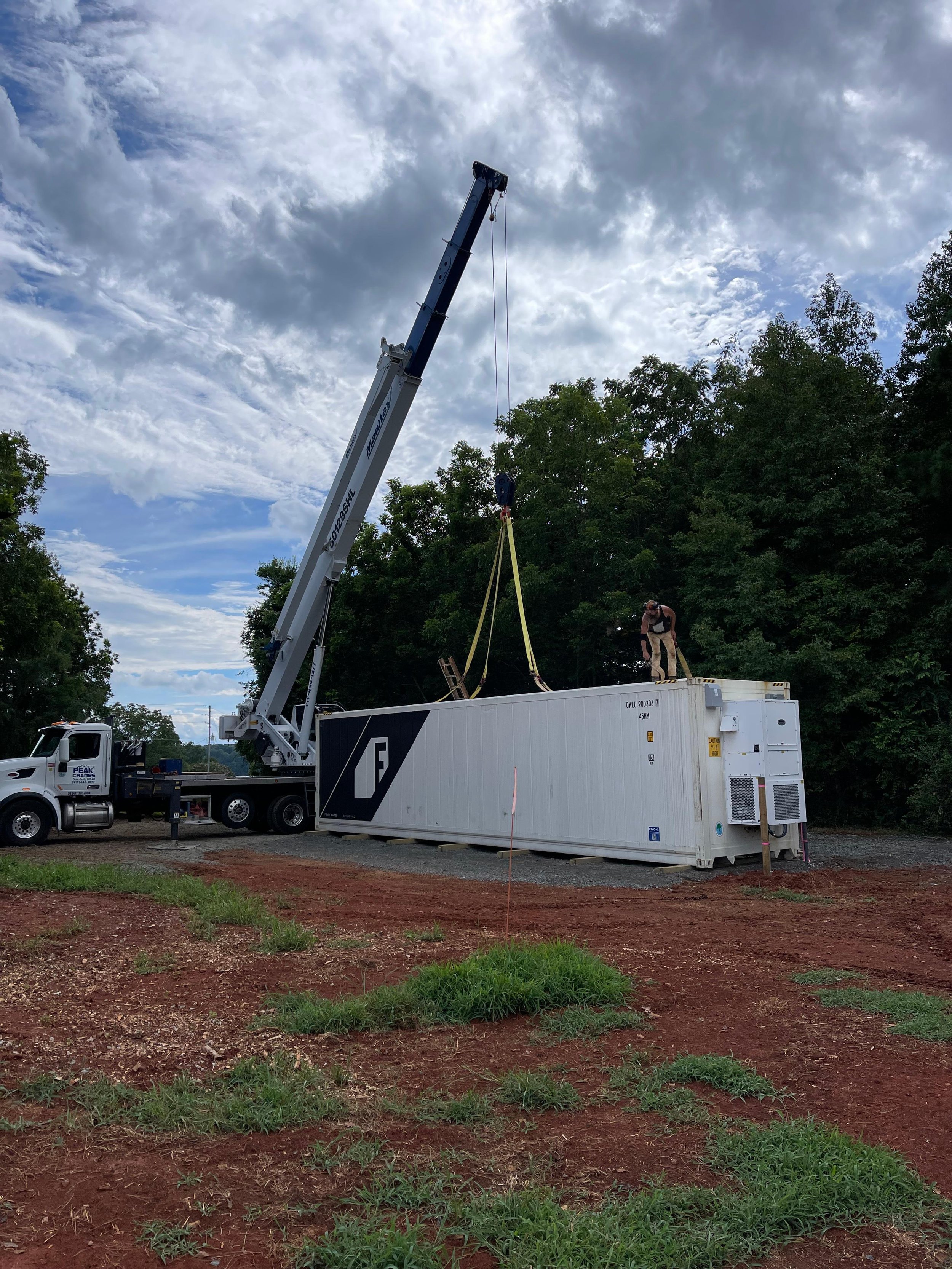Using Indoor Grow Lights in the Greenery™ S
LEDs Can Bring the Sun Indoors
In this blog, we're going to explore how farming with indoor grow lights can grow strong and healthy plants indoors. First, it is important to understand how photosynthesis — the process plants use to convert light energy into food — works. Here’s a brief refresher on what you likely learned in high school biology.
See exactly how it works in the Greenery S
Photosynthesis 101
Photosynthesis takes light energy and converts it into potential chemical energy, which a plant stores in the form of sugar. The plant then uses this energy to grow.
The process begins in chloroplasts. Chloroplasts are parts of plant cells that contain the light-absorbing chlorophyll that gives a plant its green color. When chlorophyll is exposed to light, the cell goes through a complicated chemical reaction, converting light energy into molecules of potential chemical energy called ATP.
The plant then uses ATP and CO2 from the surrounding environment to make glucose, a simple sugar molecule. As the plant absorbs more and more light, it builds complicated glucose chains into larger compounds of cellulose and starch. The largest molecules become plant cell walls, others are used during plant metabolic functions, and the rest provide humans and animals with important food energy.
From a plant biology standpoint, the entire process can be summarized as:
Light + 6H2O (water) + 6CO2 (carbon dioxide) → C6H12O6 (glucose) + 6O2 (oxygen)
There’s a lot more to photosynthesis, but for our conversation about LEDs, this is a perfect summary. While photosynthesis originally evolved as a reaction to sunlight, the development of indoor farming has proven that indoor grow lights can be as, if not more, effective than the sun.
LED Grow Lights vs. Sunlight
While the sun is the ultimate resource, it is not infallible. The Earth’s rotation causes the sun to constantly change position, meaning most regions of the world experience days that are too short, too cold, or too hot to grow plants. When sunlight does reach plants on the ground, it is ‘white light’. This is a blend of every known light wavelength — from infra-red to ultraviolet — with green and yellow light as the most intense (520-590nm). Plants, however, only have receptors for red (635-700nm) and blue (450-490) light, so they are unable to process the rest of the spectrum effectively.
LEDs are able to counteract these inefficiencies. LEDs (light-emitting diodes) are powerful, energy-efficient and long-lasting. They also have low heat outputs, making them ideal for indoor farming. Unlike the sun, the intensity of an LED bulb doesn’t change — midday, midnight, mid-summer and mid-winter, LEDs give plants the same consistent and directional light. LEDs can also be customized to emit only select colors, such as the red and blue light plants need to grow strong. Finally, like with all other aspects of container farming, farming with indoor grow lights gives farmers something they can never have with the sun: control. Using LEDs means creating 20-hour sunlit days and brightening, dimming, or changing the color of the light based on the crop.
Understanding Indoor Grow Lights
Now that we understand the benefits of using LED grow lights for indoor farming, let’s get a deeper understanding of the two main factors of light that will maximize your yields: color and power.
Color
As we mentioned before, plants are picky about the type of light they absorb. Indoor grow lights give them the optimal red and blue wavelengths to grow big, healthy, and strong. But why red and blue specifically?
Outdoors, red light is most plentiful during summertime. When plants sense more red light using a special light receptor, they release a hormone that keeps chlorophyll from breaking down. This enables the plant to take the most advantage of the plentiful sunlight during spring and summer. For this reason, red light yields large, healthy plants, since the chlorophyll is converting plenty of light into cellulose. Additionally, red light is needed to grow flowers and seeds/fruits. Keep in mind–like every other good thing, too much red light can cause serious problems, namely lanky and spindly plants.
While red light is more prevalent in spring and summer, higher levels of blue light occur during fall and winter. The plant’s blue light receptor triggers a hormone response that slows down stem and leaf growth when it senses higher levels of blue light. For this reason, the initial reaction is to use no blue grow lights, but having some blue is important. The same blue-light hormone controls “apical dominance” in plants, which is the reason a plant's main stem is larger than any side stems. It's common to see plants with more exposure to blue light yield a short and bushy plant with a more complex stem structure. Too much blue light, however, will result in stunted plants.
Most indoor growers recommend getting the best of both worlds using a 5:1 ratio of red to blue light. The high level of red light keeps plants in their prime growing mode while the small amount of blue encourages stem growth.
Power
Measuring the intensity of light is complicated — there are at least half a dozen units of measurement, all meaning different things.
Watts, for example, are a measure of power that everyone is likely most familiar with. Yet, when it comes to the physics of growing plants, it’s more-or-less a useless measurement. That is because watts describe how much power a light source consumes, not what it emits. So, while it’s helpful to know the wattage of a grow light, the measurement has little to do with the plants themselves.
If you hear talk of lumens, you’re getting closer to understanding the power of a grow light. A lumen measures light based on how humans perceive it. We have what's called "photopic vision", which is our vision and color perception in well-lit conditions. Lumens are charted on a photopic response curve (shown above) and measure the light that humans and animals can see. As you can see, the range is mostly green light, with little of the red or blue parts of the spectrum. While calculations using lumens, like LUX (lumens/m2) or foot candle meters (lumens/ft2), are a helpful measurement for understanding humans, they also tell us little about the plants. For one, plants don’t absorb most of the green light that dominates the lumen curve. Also, you will likely be using red and blue grow lights in your farm, which will not register high for lumens. For these reasons, you should avoid using lumens to measure the power of your indoor grow lights.
What you should be using to measure the power of your grow lights is photosynthetic photon flux density (PPFD). Before we dive into the virtues of PPFD, we need to understand what it is measuring. PPFD is a measure of photosynthetic active radiation, PAR for short. PAR is not a measure of anything itself but is more of a description. PAR light is all the visible wavelengths of light which cause photosynthesis, found within the 400-700 nanometer range. PPFD is a ‘spot’ measurement that tells you how many photons from the PAR range hit a specific area of your canopy over time. It is expressed as micro moles per square meter per second (μmol/m2/s). For this reason, PPFD is the most accurate measure of light power. First, unlike other measures, it considers the entire spectrum of light that plants see. PPFD also takes into account the amount of light that will actually reach the plant instead of focusing only on the point of origin. A light source can be very bright and powerful, but if it is too away from the plant, or obstructed in some way, the plant won’t be getting all the light it needs for photosynthesis. PPFD controls for this kind of inaccuracy.
Comparing LEDs with other grow lights
LEDs aren’t the only types of grow lights. Other common indoor grow lights for farming are incandescent/halogen, fluorescent, and HID (high-intensity discharge) lamps. Here’s a general breakdown:
Indoor Grow Lights in the Greenery S
We know that the perfect light source is the secret to growing big and healthy plants. That’s why we thought carefully about how to use purposeful design, color, and intensity to create the best grow lights.The Greenery S LED boards have evenly spaced red and blue diodes to prevent light diffusion and wasted energy. Combined, there are 120 LED boards. 8 are in the Greenery's nursery station and 112 are mounted on aluminum frames to form four arrays in the cultivation area. The directional arrays, one on either 40-foot wall and two down the center aisle, help the plants soak up as much light energy as possible.
Independent color control
The red and blue diodes (660nm and 450nm, respectively) meet the specific needs of the plants that we described earlier in this article. The cultivation area boards have a ratio of 5:1 red-to-blue LEDs, ideal for promoting the growth of dense leafy greens. The nursery station boards have a modified ratio of 4:1 red-to-blue. The reasoning is that seedlings benefit from an elevated amount of blue light to encourage stem growth early on.
By default, the Greenery S provides plants with a mixed red-blue light, giving the farm its distinct purple glow. The operator can also control the color of the lights independently in individual zones to coax out desired plant characteristics. For example, increasing red light will grow plants that are larger/taller plants and bring out the red in leaves. In contrast, increasing blue light will grow a denser/bushier plant. This level of control means that you can create custom light conditions for multiple crop types, or experiment with different light recipes for one crop to see what gives you the best taste and highest yield.
Max Power for Max Performance
Light and photosynthesis have a direct relationship: The more light reaches the plants (μmol/m2/s, aka PPFD), the greater the rate of photosynthesis. But light can only do so much: after approximately 350 μmol/m2/s, light stops having as much of an effect on photosynthesis, since the plant’s chloroplasts can only process so much light at a time. Light is not the only important input, however. As seen in the equation and chart, carbon dioxide is another important lever for photosynthesis. Even after the chloroplasts are exhausted, CO2 can still influence plant growth. This is why environmental control is often as important as light control.
In the graph, you can see the drop-off point of approximately 350 μmol/m2/s is critical when trying to find a balance between power and efficiency. In the Greenery S, the Cultivation Area sees a PPFD range from 200-350 μmol/m2/s (based on your chosen light mode, explained below) which is at the top end of the ideal power range. This means that all the energy the operator is using to power the LEDs is being used by the plant to grow. Any higher and the operator would be wasting energy, any lower and the operator would be missing out yields.
Dynamic Lighting Control
The Greenery S takes a huge leap in LED technology by allowing farmers to customize the lighting spectrum, intensity, and duration of light to achieve their desired plant yields. The Greenery S features Freight Farms’ brand new proprietary LEDs, which emit light with 60% greater intensity and 50% better efficiency compared to off-the-shelf options. Not only are the LEDs more powerful and efficient; they also give farmers precise control over their lights with brand new power modes: Eco (prioritizing farm efficiency by reducing power consumption), Performance (prioritizing plant growth for greater yields, and Standard (balances the two).
You can learn more about the Greenery S when you download our comprehensive product booklet!
Here are all our sources from this blog, read them for more information: photosynthesis, introduction to light and color, influence of colors on plants, and measuring the power of light.



















